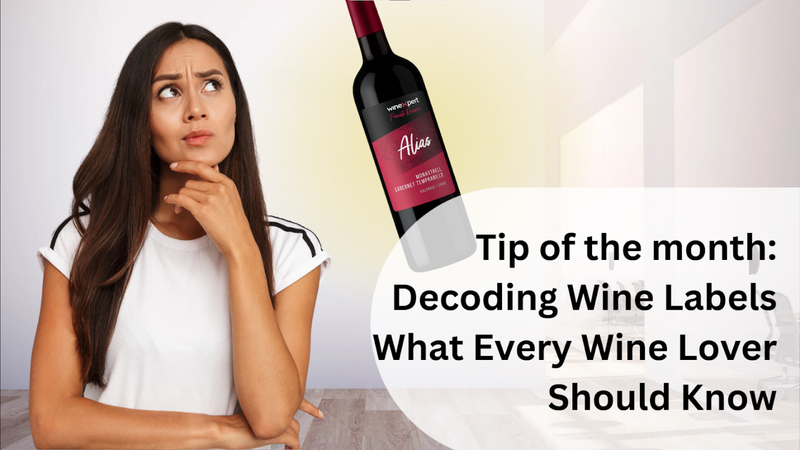Tip of the Month: Decoding Wine Labels - What Every Wine Lover Should Know

We’ve all been there…
Standing in the wine aisle, squinting at a label that looks more like a riddle than a helpful guide.
A beautiful bottle… but what is it, really?
If you’ve ever picked wine based on the prettiest label or just gone with “the one I had last time,” this one’s for you. Let’s take the guesswork out of wine shopping.
Start with the Basics:
Vintage – This is simply the year the grapes were harvested.
Wines from warmer years might be fruitier; cooler years can bring more structure.
No vintage? That’s usually a non-vintage blend made for consistency, (nothing wrong with that 😉)
Varietal – This tells you what grape (or grapes) are in the bottle.
Think: Cabernet Sauvignon, Chardonnay, Pinot Noir.
If it says “Red Blend,” it means the winemaker mixed different grapes together, but it can still be wonderful!
Appellation – A fancy way of saying where the grapes were grown.
“Napa Valley,” “Tuscany,” or “Burgundy” all fall under this.
The more specific the place, the more it tells you about the wine’s style and structure.
A Few More Clues Worth Noticing:
Estate Bottled – The winery grew the grapes and bottled the wine in the same place. Always a good sign.
Reserve – In some countries, this actually means the wine was aged longer or made from special grapes. In others… It's more of a marketing term. (Classic wine move)
Alcohol % – Higher alcohol usually means fuller body and riper fruit. Lower alcohol tends to be lighter and brighter.
Bonus Tip:
Flip the bottle.
The back label often has tasting notes, food pairings, and even a sentence or two that give away the wine’s whole personality.
Every bottle tells a story, and the label is your sneak preview.
